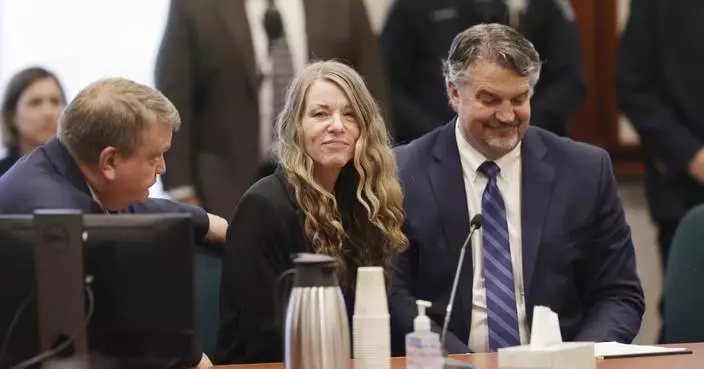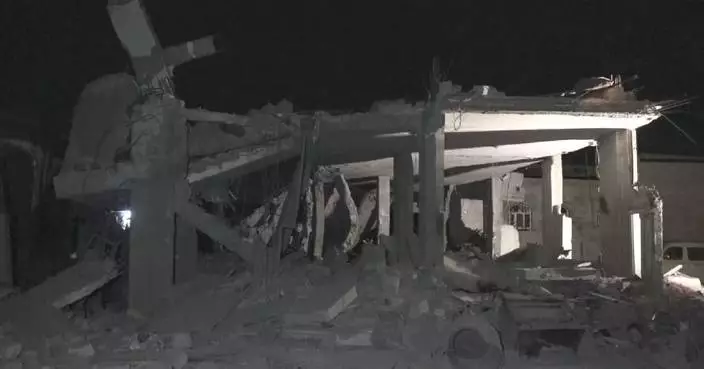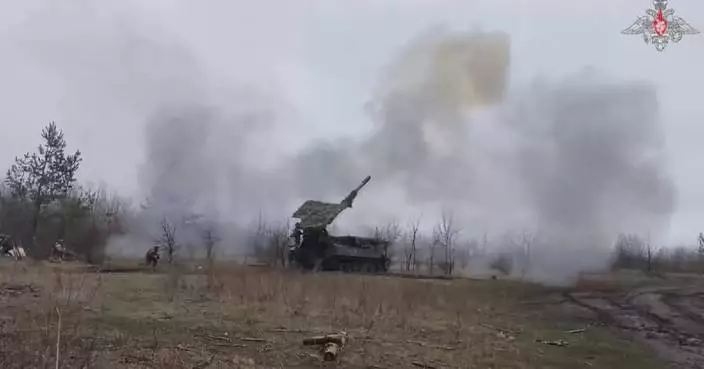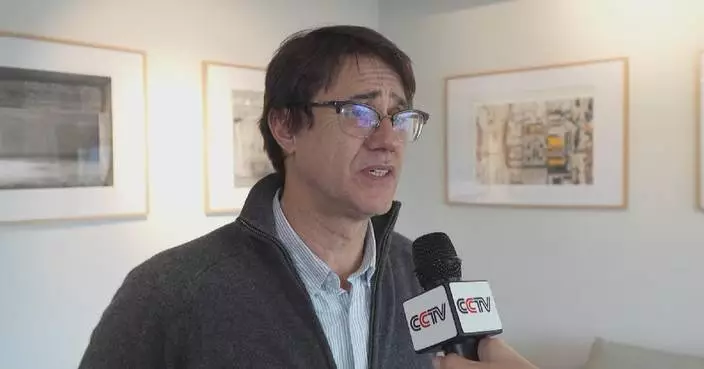A federal judge will temporarily block President Donald Trump’s administration from cutting billions in federal dollars that support COVID-19 initiatives and public health projects throughout the country.
U.S. District Judge Mary McElroy, appointed by Trump in 2019 but first nominated by former President Barack Obama, in Rhode Island said Thursday that she plans to grant the court order sought by 23 states and the District of Columbia.
“They make a case, a strong case, for the fact that they will succeed on the merits, so I’m going to grant the temporary restraining order,” said McElroy, who plans to issue a written ruling later.
New York Attorney General Letitia James tweeted about the judge’s decision immediately after the hearing, saying: “We’re going to continue our lawsuit and fight to ensure states can provide the medical services Americans need."
Assistant U.S. Attorney Leslie Kane objected to the temporary restraining order in court but she said she was limited in the argument she could make against it, adding that her office was unable to thoroughly review the thousands of documents under the time limitation.
The states’ lawsuit, filed Tuesday, sought to immediately stop the $11 billion in cuts. The money was allocated by Congress during the pandemic and mostly used for COVID-related initiatives, as well as for mental health and substance use efforts. The lawsuit said losing the money would devastate U.S. public health infrastructure, putting states “at greater risk for future pandemics and the spread of otherwise preventable disease and cutting off vital public health services.”
The U.S. Department of Health and Human Services has defended the decision, saying that the money was being wasted since the pandemic is over.
State and local public health departments already have laid off people, including nearly 200 employees at the Minnesota Department of Health. North Carolina says it stands to lose about $230 million, and California officials put their potential losses at $1 billion.
Pennsylvania Gov. Josh Shapiro, who is also part of the lawsuit, said half a billion dollars in public health grants that support long-term care for the elderly and immunizations for children were at stake in his state.
“As a result of taking the Administration to court, these dollars will now start flowing again,” he wrote on X.
The temporary block on chopping health funding is the latest legal setback for the Trump administration, which is facing some 150 lawsuits on issues ranging from immigration to deep financial and job cuts at federal agencies to transgender rights. Federal judges have issued dozens of orders slowing — at least for now — the president’s ambitious conservative agenda.
AP reporter Lindsay Whitehurst in Washington contributed to this report.
The Associated Press Health and Science Department receives support from the Howard Hughes Medical Institute’s Science and Educational Media Group and the Robert Wood Johnson Foundation. The AP is solely responsible for all content.

Lynn Sokler, who retired from the CDC three weeks ago after working there almost two decades, protests with others in support of the Centers for Disease Control and Prevention in front of the headquarters in Atlanta, on Tuesday, April 1, 2025. (AP Photo/Ben Gray)
BANGKOK (AP) — Long-shot efforts to find survivors from Myanmar’s devastating March 28 earthquake were winding down Monday, as rescue efforts were supplanted by increasing relief and recovery activity. The death toll surpassed 3,600 and was still climbing.
A situation report issued late Monday by the U.N. Office for the Coordination of Humanitarian Affairs, or OCHA, said more than 17.2 million people are living in affected areas, and urgently need food, drinking water, health care, cash assistance and emergency shelter.
In the capital, Naypyitaw, people cleared debris and collected wood from their damaged houses under drizzling rain, and soldiers removed wreckage at some Buddhist monasteries.
Myanmar Fire Services Department said Monday that rescue teams had recovered 10 bodies from the rubble of a collapsed building in Mandalay, Myanmar’s second biggest city.
It said international rescuers from Singapore, Malaysia and India had returned to their countries after their work to find survivors was considered completed. The number of rescue teams operating in the residential areas of Naypyitaw has been steadily decreasing.
The 7.7 magnitude quake hit a wide swath of the country, causing significant damage to six regions and states. The earthquake left many areas without power, telephone or cell connections and damaged roads and bridges, making the full extent of the devastation hard to assess.
Maj. Gen. Zaw Min Tun, a spokesperson for the military government, said late Monday that the quake’s death toll has reached 3,600, with 5,017 injured and 160 missing. He said search and rescue operations involved 1,738 personnel from 20 countries, and had helped find and extract 653 survivors.
He also said the quake has officially been named “the Big Mandalay Earthquake” to ensure consistency in future documentation and referencing. Previous significant earthquakes also received official names.
“Entire communities have been upended, forcing people to seek shelter in makeshift conditions, disrupting markets, worsening psychosocial distress and bringing essential services—including running water, sanitation and health—to the verge of collapse,” said the report from OCHA.
“People left homeless by the earthquakes are exposed to extreme heat during the country’s hottest and driest month of the year, and rains have already started in Mandalay — posing an additional threat to those sheltering in the open,” it noted.
Myanmar’s military government and its battlefield opponents, meanwhile, have been trading accusations over alleged violations of ceasefire declarations each had declared to ease earthquake relief efforts.
Myanmar has been in turmoil since the army’s 2021 takeover ousted the elected government of Aung San Suu Kyi, which led to nationwide peaceful protests that escalated into armed resistance and what now amounts to civil war.
Although the military government and its armed opponents declared unilateral ceasefires for a temporary period, reports of continued fighting are widespread, with the army receiving the most criticism for continuing aerial bombing, according to independent Myanmar media and eyewitnesses.
Independent confirmation of fighting is difficult because of the remoteness of the areas in which much of it takes place and restrictions on journalists.
The Three Brotherhood Alliance, a trio of powerful ethnic minority guerrilla armies, declared a unilateral temporary ceasefire on April 1, following an earlier declaration by the opposition National Unity Government, or NUG.
The NUG, which leads the pro-democracy resistance, said its armed wing, the People’s Defense Force, would cease offensive actions for two weeks.
On Wednesday, the army announced a similar unilateral ceasefire, as did another ethnic minority group among its foes, the Kachin Independence Organization.
All sides reserved the right to act in self-defense.
The Ta’ang National Liberation Army, or TNLA, and the Arakan Army, both members of the Three Brotherhood Alliance, separately accused the army of continuing attacks.
The shadow National Unity Government on Saturday accused the military of carrying out 63 airstrikes and artillery attacks since the earthquake, resulting in the deaths of 68 civilians, including one child and 15 women.
However, military spokesperson Zaw Min Tun said in an audio message to journalists on Saturday that the groups in the Three Brotherhood Alliance and the Kachin Independence Army, as well as the Karen National Union in southeastern Myanmar and pro-democracy forces in the central Magway region and other groups violated the ceasefires by attacking the army.
“We are carrying out relief and assistance efforts for the people affected by the earthquake. I am saying this to make everyone aware of the ceasefire violations at a time like this,” Zaw Min Tun said.
——-
Associated Press writer Edith Lederer at the United Nations contributed to this report.

People clean debris from damaged buildings in the aftermath of an earthquake on March 28, in Naypyitaw, Myanmar, Monday, April 7, 2025. (AP Photo)

People clean debris from damaged buildings in the aftermath of an earthquake on March 28, in Naypyitaw, Myanmar, Monday, April 7, 2025. (AP Photo)

People clean debris from damaged buildings in the aftermath of an earthquake on March 28, in Naypyitaw, Myanmar, Monday, April 7, 2025. (AP Photo)

A local woman pushing her bicycle walks past a damaged building in the aftermath of an earthquake on March 28, in Naypyitaw, Myanmar, Monday, April 7, 2025. (AP Photo)

People clean debris from damaged buildings in the aftermath of an earthquake on March 28, in Naypyitaw, Myanmar, Monday, April 7, 2025. (AP Photo)
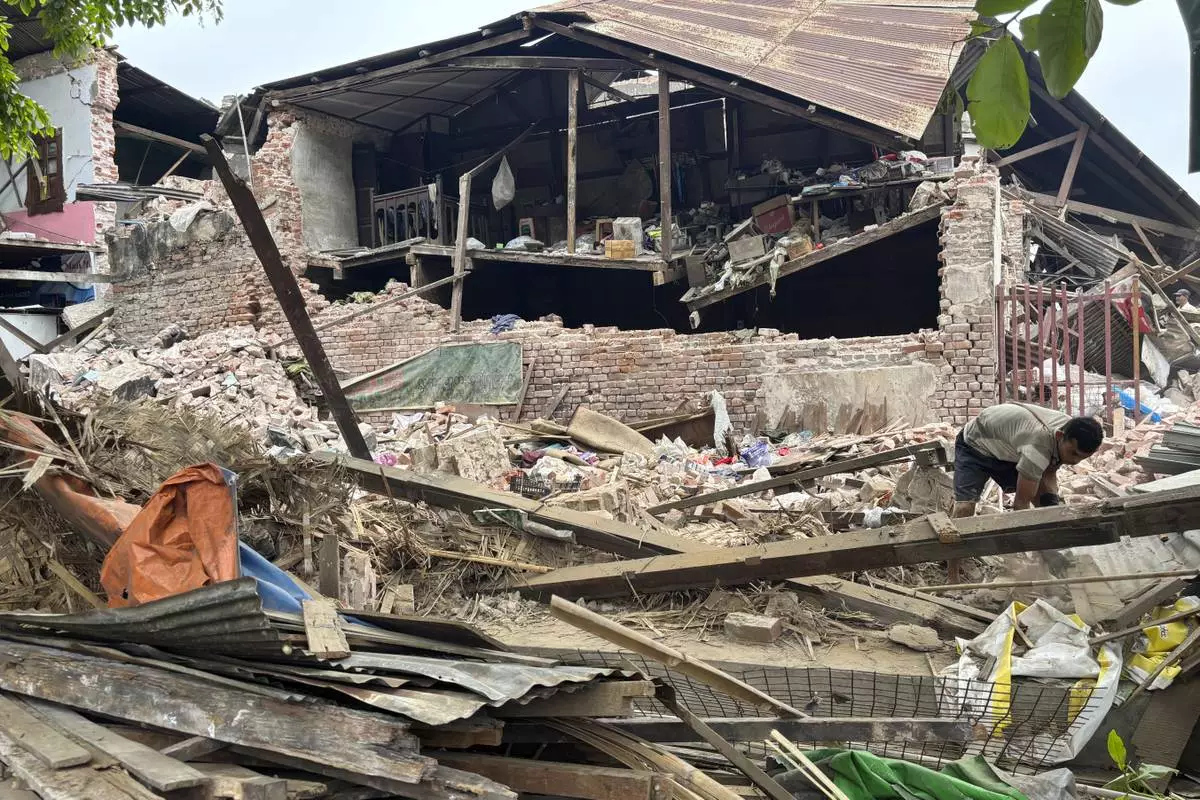
A man cleans debris from damaged buildings in the aftermath of an earthquake on March 28, in Naypyitaw, Myanmar, Monday, April 7, 2025. (AP Photo)

People clean debris from damaged buildings in the aftermath of an earthquake on March 28, in Naypyitaw, Myanmar, Monday, April 7, 2025. (AP Photo)

People clean debris from damaged buildings in the aftermath of an earthquake on March 28, in Naypyitaw, Myanmar, Monday, April 7, 2025. (AP Photo)

People clean debris from damaged buildings in the aftermath of an earthquake on March 28, in Naypyitaw, Myanmar, Monday, April 7, 2025. (AP Photo)

People clean debris from damaged buildings in the aftermath of an earthquake on March 28, in Naypyitaw, Myanmar, Monday, April 7, 2025. (AP Photo)

A local man rides a bicycle past a damaged building in the aftermath of an earthquake on March 28, in Naypyitaw, Myanmar, Monday, April 7, 2025. (AP Photo)

People clean debris from damaged buildings in the aftermath of an earthquake on March 28, in Naypyitaw, Myanmar, Monday, April 7, 2025. (AP Photo)

People clean debris from damaged buildings in the aftermath of an earthquake on March 28, in Naypyitaw, Myanmar, Monday, April 7, 2025. (AP Photo)






















